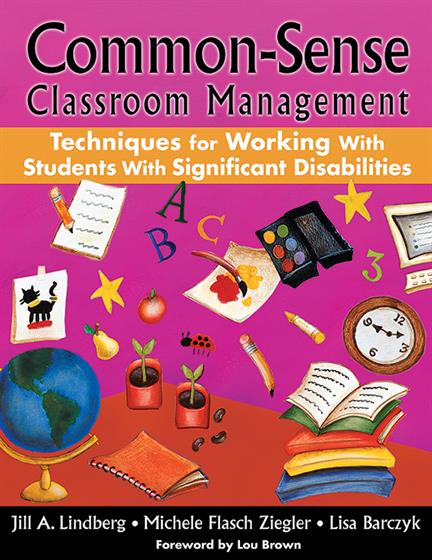Foreword by Lou Brown
Preface
About the Authors
Introduction and Overview
1. Getting Ready
Time Organization
Student Information
Finding Appropriate Materials and Adaptive Equipment
Physical and Visual Arrangements Within the Room
Helping Administrators, General Education Teachers, and Support Staff Understand the Needs and Abilities of Students
Knowing Your Community
2. Organizing the Students and Their Learning Environment
The IEP and Planning
Grouping Students
Developing Daily and Weekly Schedules
Individual Student Planning in a Variety of Learning Environments
Developing Lesson Plans
Documenting Student Progress
Working With Classroom Support Staff
Community Experiences and Instruction
Advocating for Your Students and Exploring Inclusive Learning Environments
3. General Planning: Curriculum and Methods of Instruction
Consistency, Structure, and Routine
Student Full and Partial Participation in the General Education Classroom
Systematic Instruction and Fading
Curriculum
Blending Academic and Functional Curriculum Models
4. Academic Planning
Inclusion, Least Restrictive Environment (LRE), and IDEIA
Academic and Content Standards and Writing Individual Education Plans (IEPs)
Curriculum, Instructional, and Assessment Planning
Inclusive Instructional Strategies and Adaptations
Active Participation Versus Presence Only in the Classroom
Collaboration and Team Planning
5. Functional Planning
Planning for Community and Functional Skills Instruction
Functional Learning Outcomes
Functional Instruction
Inclusive Examples
Social Skills and Peer Relationships
Self-Advocacy and Self-Determination
Transition and Outcomes
6. Assistive Technology as a Learning Support
Definition of Assistive Technology (AT)
The SETT Framework
Use of Assistive Technology for Communication
Use of Assistive Technology to Access Literacy
Use of Assistive Technology to Control the Environment
Use of Assistive Technology to Hold Things
Use of Assistive Technology to See Better
Use of Assistive Technology to Hear Better
Use of Assistive Technology for Computer Access
Use of Assistive Technology for Eating or Dressing
Use of Assistive Technology for Access to Recreation and Leisure
Documenting Assistive Technology in the IEP
7. Understanding Behavior
Communication
Determining Cause and Supporting the Student
Developing a Support Plan for Difficult Behaviors in Different Settings
Shaping Behavior and Rewards
8. Working With Related Service Providers and Other Support Staff
Defining Related Services
Models of Service Delivery
Teacher Tips for Working With Related Service Providers
Finding Time for Collaboration
Role of the Occupational Therapist
Role of the Physical Therapist
Role of the Speech and Language Pathologist
Working With Other Support Personnel
9. Communication With Parents and Guardians
Developing a Positive Relationship With Parents or Guardians
Coordinating School and Home Expectations
Ongoing Communication Strategies
IEP Team Meetings
Parent-Teacher Conferences
10. Transition
Parent and Student Involvement
Transition in Early Development
School-Age Transitions
Identifying Adaptive Equipment Needs
Developing Postsecondary Goals
Planning a Coordinated Set of Activities to Help Meet Postsecondary Goals
Determining Community Resources
References
Index




